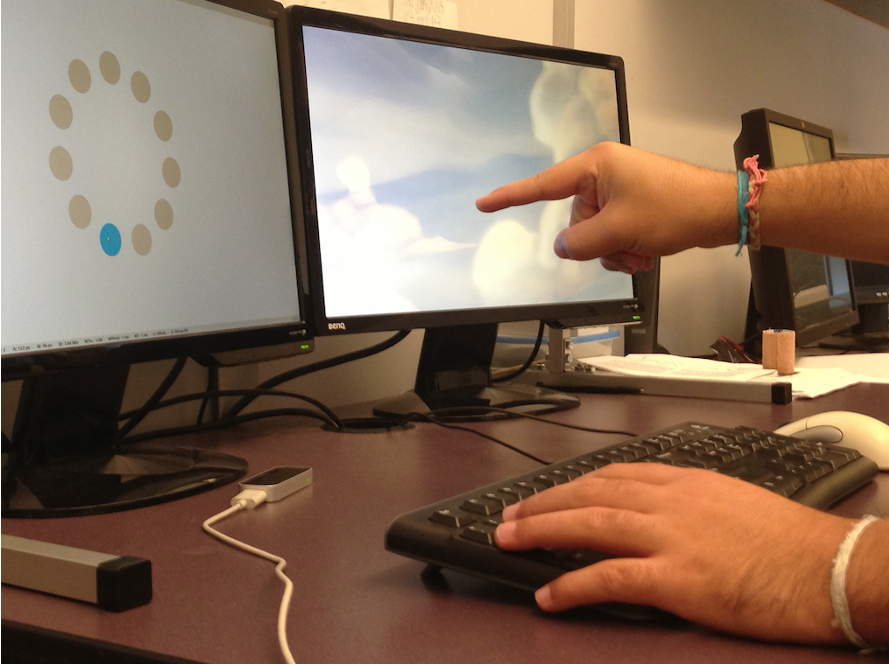
The Performance of Un-Instrumented in-Air Pointing Inproceedings
Michelle A. Brown, Wolfgang Stuerzlinger, Euclides José de Mendonça Filho
Abstract:
We present an analysis of in-air finger and hand controlled object pointing and selection. The study used a tracking system that required no instrumentation on the user. We compared the performance of the two pointing methods with and without elbow stabilization and found that the method that yielded the best performance varied for each participant, such that there was no method that performed significantly better than all others. We also directly compared user performance between un-instrumented in-air pointing and the mouse. We found that the un-instrumented in-air pointing performed significantly worse, at less than 75% of mouse throughput. Yet, the larger range of applications for un-instrumented 3D hand tracking makes this technology still an attractive option for user interfaces.
